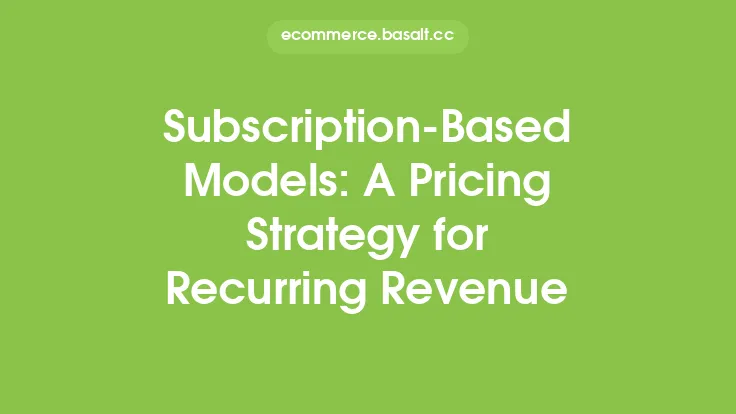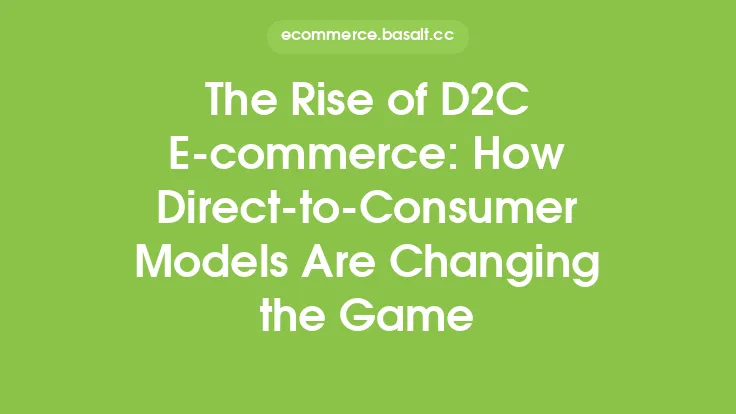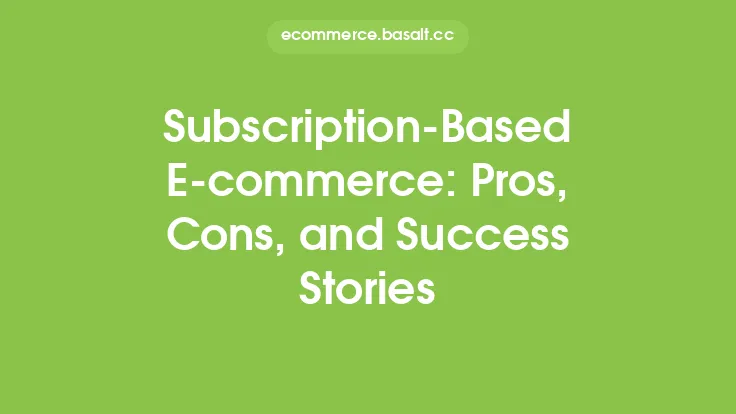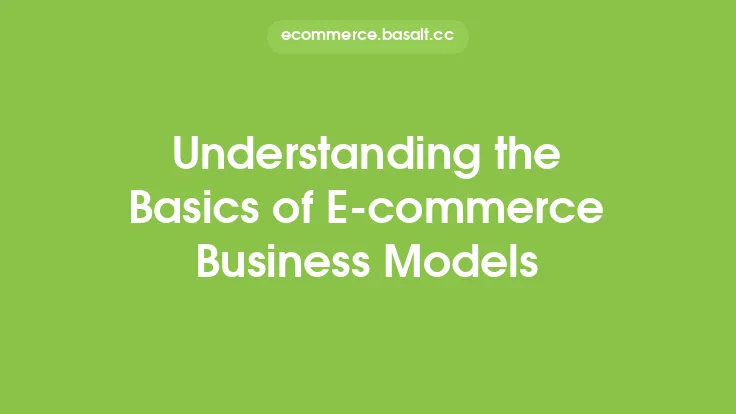The e-commerce landscape has undergone significant transformations over the years, driven by changing consumer behaviors, technological advancements, and innovative business models. One such model that has gained immense popularity in recent times is subscription-based e-commerce, which has revolutionized the way businesses operate and generate revenue. In this article, we will delve into the world of subscription-based e-commerce, exploring its benefits, types, and strategies for success.
Introduction to Subscription-Based E-commerce
Subscription-based e-commerce refers to a business model where customers pay a recurring fee, usually on a monthly or yearly basis, to receive products or services. This model has been around for decades, but its popularity has surged in recent years, thanks to the rise of digital technologies and changing consumer preferences. Subscription-based e-commerce offers a win-win situation for both businesses and customers, as it provides a predictable revenue stream for companies and a convenient, cost-effective way for customers to access products and services.
Benefits of Subscription-Based E-commerce
The benefits of subscription-based e-commerce are numerous, making it an attractive option for businesses and customers alike. Some of the key advantages include:
- Predictable revenue stream: Subscription-based models provide businesses with a steady and predictable revenue stream, allowing them to better forecast and plan for the future.
- Increased customer loyalty: Subscription-based models encourage customers to remain loyal to a brand, as they are invested in the ongoing relationship and receive ongoing benefits.
- Improved customer retention: Subscription-based models make it easier for businesses to retain customers, as customers are more likely to continue their subscription rather than switch to a competitor.
- Enhanced customer experience: Subscription-based models allow businesses to offer personalized and tailored experiences to customers, improving overall satisfaction and loyalty.
- Reduced customer acquisition costs: Subscription-based models reduce the need for businesses to constantly acquire new customers, as existing customers provide a steady revenue stream.
Types of Subscription-Based E-commerce Models
There are several types of subscription-based e-commerce models, each with its unique characteristics and benefits. Some of the most common types include:
- Product subscription boxes: These models involve sending customers a monthly box of products, often curated around a specific theme or niche.
- Service-based subscriptions: These models involve providing customers with access to a service, such as software, streaming, or membership programs.
- Replenishment subscriptions: These models involve automatically shipping customers replacement products, such as consumables or household essentials, on a regular basis.
- Access-based subscriptions: These models involve providing customers with access to exclusive content, events, or experiences, often in exchange for a monthly or yearly fee.
Strategies for Success in Subscription-Based E-commerce
To succeed in subscription-based e-commerce, businesses must focus on several key strategies, including:
- Offering high-quality products or services: Businesses must ensure that their products or services meet the needs and expectations of their customers, providing ongoing value and satisfaction.
- Providing excellent customer service: Businesses must prioritize customer service, responding promptly to customer inquiries and resolving issues quickly and efficiently.
- Building strong relationships with customers: Businesses must focus on building strong, personalized relationships with customers, using data and analytics to tailor experiences and offers.
- Continuously innovating and improving: Businesses must stay ahead of the curve, continuously innovating and improving their products, services, and experiences to meet changing customer needs and preferences.
- Analyzing and optimizing performance: Businesses must regularly analyze and optimize their performance, using data and analytics to identify areas for improvement and optimize their subscription-based model.
Best Practices for Implementing a Subscription-Based E-commerce Model
Implementing a subscription-based e-commerce model requires careful planning and execution. Some best practices to keep in mind include:
- Conducting thorough market research: Businesses must conduct thorough market research to understand customer needs and preferences, identifying opportunities for subscription-based models.
- Developing a robust technology infrastructure: Businesses must develop a robust technology infrastructure to support their subscription-based model, including payment processing, customer management, and analytics.
- Creating a seamless customer experience: Businesses must prioritize creating a seamless customer experience, making it easy for customers to sign up, manage their subscriptions, and access products and services.
- Offering flexible pricing and plans: Businesses must offer flexible pricing and plans to meet the needs of different customer segments, providing options for monthly, yearly, or other subscription periods.
- Continuously monitoring and evaluating performance: Businesses must continuously monitor and evaluate their performance, using data and analytics to identify areas for improvement and optimize their subscription-based model.
Common Challenges in Subscription-Based E-commerce
While subscription-based e-commerce offers many benefits, it also presents several challenges, including:
- High customer acquisition costs: Attracting new customers to a subscription-based model can be costly, requiring significant investment in marketing and advertising.
- Customer churn: Subscription-based models are vulnerable to customer churn, where customers cancel their subscriptions due to dissatisfaction or lack of value.
- Competition from established brands: New entrants to the subscription-based e-commerce market may face competition from established brands, making it difficult to gain traction and market share.
- Managing inventory and logistics: Subscription-based models require careful management of inventory and logistics, ensuring that products are delivered to customers on time and in good condition.
- Maintaining customer engagement: Subscription-based models require ongoing customer engagement, providing customers with reasons to continue their subscription and remain loyal to the brand.
Future of Subscription-Based E-commerce
The future of subscription-based e-commerce looks bright, with ongoing growth and innovation expected in the coming years. Some trends to watch include:
- Increased use of artificial intelligence and machine learning: Subscription-based e-commerce models will increasingly leverage artificial intelligence and machine learning to personalize experiences, predict customer behavior, and optimize operations.
- Growing demand for sustainable and eco-friendly subscriptions: Consumers will increasingly demand sustainable and eco-friendly subscription options, driving growth in areas such as reusable products and zero-waste packaging.
- Expansion into new markets and industries: Subscription-based e-commerce models will expand into new markets and industries, such as healthcare, education, and financial services.
- Increased focus on customer experience and loyalty: Businesses will prioritize customer experience and loyalty, using data and analytics to create personalized and tailored experiences that drive long-term retention and growth.
- Ongoing innovation in payment and pricing models: Subscription-based e-commerce models will continue to innovate in payment and pricing models, offering customers flexible and convenient options for managing their subscriptions.





